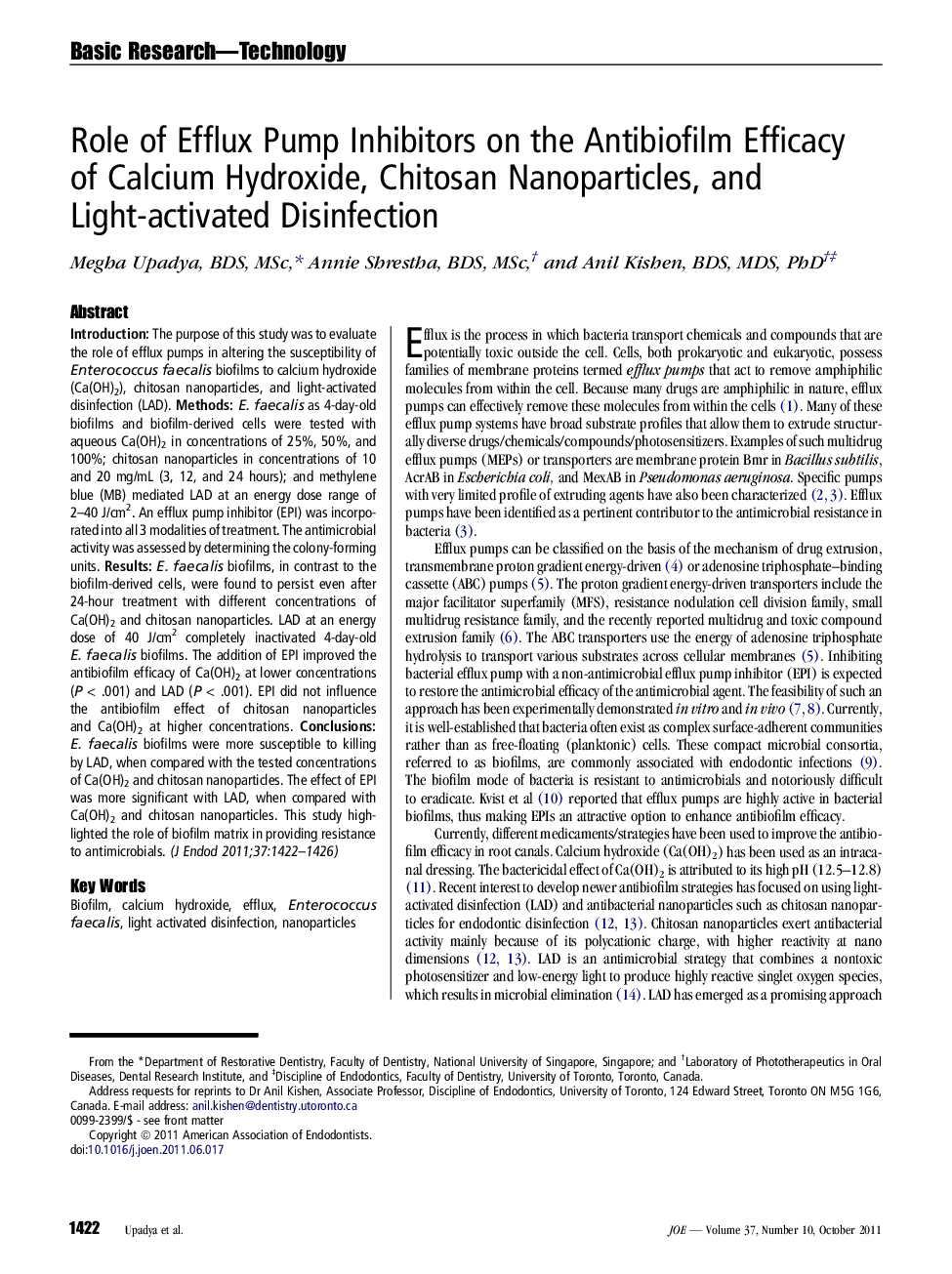| Article ID | Journal | Published Year | Pages | File Type |
|---|---|---|---|---|
| 3147678 | Journal of Endodontics | 2011 | 5 Pages |
IntroductionThe purpose of this study was to evaluate the role of efflux pumps in altering the susceptibility of Enterococcus faecalis biofilms to calcium hydroxide (Ca(OH)2), chitosan nanoparticles, and light-activated disinfection (LAD).MethodsE. faecalis as 4-day-old biofilms and biofilm-derived cells were tested with aqueous Ca(OH)2 in concentrations of 25%, 50%, and 100%; chitosan nanoparticles in concentrations of 10 and 20 mg/mL (3, 12, and 24 hours); and methylene blue (MB) mediated LAD at an energy dose range of 2–40 J/cm2. An efflux pump inhibitor (EPI) was incorporated into all 3 modalities of treatment. The antimicrobial activity was assessed by determining the colony-forming units.ResultsE. faecalis biofilms, in contrast to the biofilm-derived cells, were found to persist even after 24-hour treatment with different concentrations of Ca(OH)2 and chitosan nanoparticles. LAD at an energy dose of 40 J/cm2 completely inactivated 4-day-old E. faecalis biofilms. The addition of EPI improved the antibiofilm efficacy of Ca(OH)2 at lower concentrations (P < .001) and LAD (P < .001). EPI did not influence the antibiofilm effect of chitosan nanoparticles and Ca(OH)2 at higher concentrations.ConclusionsE. faecalis biofilms were more susceptible to killing by LAD, when compared with the tested concentrations of Ca(OH)2 and chitosan nanoparticles. The effect of EPI was more significant with LAD, when compared with Ca(OH)2 and chitosan nanoparticles. This study highlighted the role of biofilm matrix in providing resistance to antimicrobials.
